Loss of function of the ALS-associated NEK1 kinase disrupts microtubule homeostasis and nuclear import
- PMID: 37585529
- PMCID: PMC10431718
- DOI: 10.1126/sciadv.adi5548
Loss of function of the ALS-associated NEK1 kinase disrupts microtubule homeostasis and nuclear import
Abstract
Loss-of-function variants in NIMA-related kinase 1 (NEK1) constitute a major genetic cause of amyotrophic lateral sclerosis (ALS), accounting for 2 to 3% of all cases. However, how NEK1 mutations cause motor neuron (MN) dysfunction is unknown. Using mass spectrometry analyses for NEK1 interactors and NEK1-dependent expression changes, we find functional enrichment for proteins involved in the microtubule cytoskeleton and nucleocytoplasmic transport. We show that α-tubulin and importin-β1, two key proteins involved in these processes, are phosphorylated by NEK1 in vitro. NEK1 is essential for motor control and survival in Drosophila models in vivo, while using several induced pluripotent stem cell (iPSC)-MN models, including NEK1 knockdown, kinase inhibition, and a patient mutation, we find evidence for disruptions in microtubule homeostasis and nuclear import. Notably, stabilizing microtubules with two distinct classes of drugs restored NEK1-dependent deficits in both pathways. The capacity of NEK1 to modulate these processes that are critically involved in ALS pathophysiology renders this kinase a formidable therapeutic candidate.
Figures
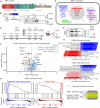

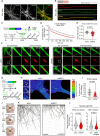
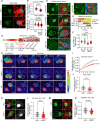
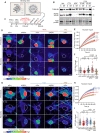
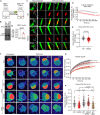

Similar articles
-
The Molecular Intersection of NEK1, C21ORF2, Cyclin F, and VCP in ALS Pathogenesis.Genes (Basel). 2025 Mar 30;16(4):407. doi: 10.3390/genes16040407. Genes (Basel). 2025. PMID: 40282367 Free PMC article. Review.
-
Mutations in NEK1 cause ciliary dysfunction as a novel pathogenic mechanism in amyotrophic lateral sclerosis.Mol Neurodegener. 2025 May 20;20(1):59. doi: 10.1186/s13024-025-00848-7. Mol Neurodegener. 2025. PMID: 40389989 Free PMC article.
-
ALS-associated C21ORF2 variant disrupts DNA damage repair, mitochondrial metabolism, neuronal excitability and NEK1 levels in human motor neurons.Acta Neuropathol Commun. 2024 Sep 4;12(1):144. doi: 10.1186/s40478-024-01852-6. Acta Neuropathol Commun. 2024. PMID: 39227882 Free PMC article.
-
NEK1 loss-of-function mutation induces DNA damage accumulation in ALS patient-derived motoneurons.Stem Cell Res. 2018 Jul;30:150-162. doi: 10.1016/j.scr.2018.06.005. Epub 2018 Jun 12. Stem Cell Res. 2018. PMID: 29929116
-
NEK1 mutations and the risk of amyotrophic lateral sclerosis (ALS): a meta-analysis.Neurol Sci. 2021 Apr;42(4):1277-1285. doi: 10.1007/s10072-020-05037-6. Epub 2021 Jan 18. Neurol Sci. 2021. PMID: 33462636 Review.
Cited by
-
Identifying dysregulated regions in amyotrophic lateral sclerosis through chromatin accessibility outliers.HGG Adv. 2024 Jul 18;5(3):100318. doi: 10.1016/j.xhgg.2024.100318. Epub 2024 Jun 13. HGG Adv. 2024. PMID: 38872308 Free PMC article.
-
Machine learning-based proteomics profiling of ALS identifies downregulation of RPS29 that maintains protein homeostasis and STMN2 level.Commun Biol. 2025 Aug 7;8(1):1177. doi: 10.1038/s42003-025-08578-8. Commun Biol. 2025. PMID: 40775435 Free PMC article.
-
NEKL-4 regulates microtubule stability and mitochondrial health in ciliated neurons.J Cell Biol. 2024 Sep 2;223(9):e202402006. doi: 10.1083/jcb.202402006. Epub 2024 May 20. J Cell Biol. 2024. PMID: 38767515 Free PMC article.
-
The Molecular Intersection of NEK1, C21ORF2, Cyclin F, and VCP in ALS Pathogenesis.Genes (Basel). 2025 Mar 30;16(4):407. doi: 10.3390/genes16040407. Genes (Basel). 2025. PMID: 40282367 Free PMC article. Review.
-
Current Strategies and Therapeutic Applications of Mesenchymal Stem Cell-Based Drug Delivery.Pharmaceuticals (Basel). 2024 May 30;17(6):707. doi: 10.3390/ph17060707. Pharmaceuticals (Basel). 2024. PMID: 38931374 Free PMC article. Review.
References
MeSH terms
Substances
Grants and funding
LinkOut - more resources
Full Text Sources
Medical
Molecular Biology Databases
Miscellaneous

